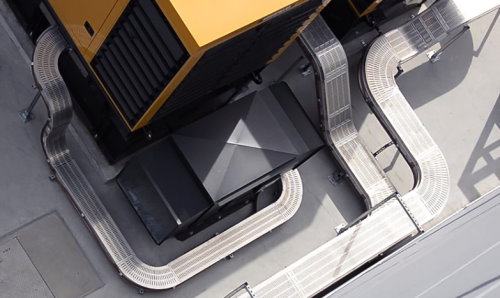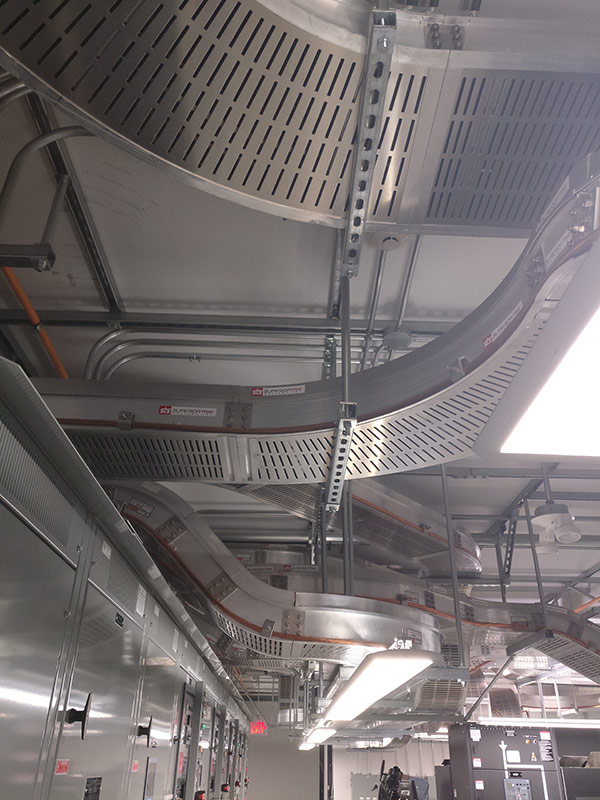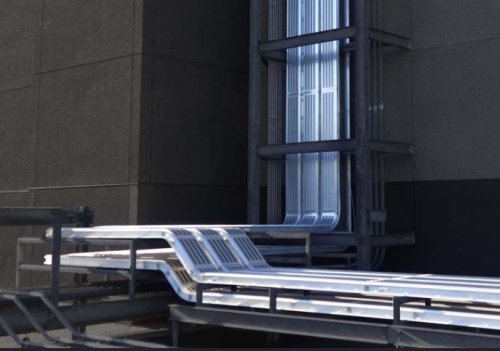Wire harnesses and cable assemblies, among other electrical power distribution equipment use solid and stranded wires. While stranded wire is made up of multiple thinner wires twisted together to form a bundle, solid wires have a solid core. Each has unique advantages, and the best option for a given application depends on the particular needs of the project.
What is stranded wire?
Bundled wires are compressed together, then covered in non-conductive insulation. Because stranded wire is more flexible, it is perfect for bending and twisting to fit complex shapes or connecting electronic components in small areas. Stranded wire won’t split or sever and is more malleable than solid wire. It is frequently utilized for indoor applications including speaker lines, circuit boards, and electronic devices.
Learn More About Our Company:
ABOUT US | OUR PRODUCTS | CONTACT US
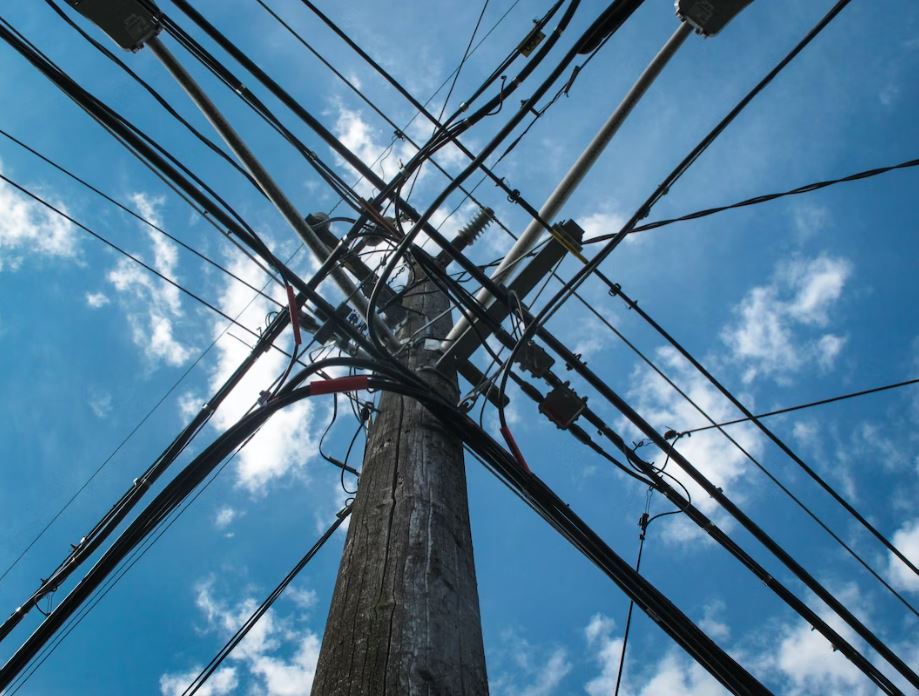
Stranded wire benefits
- More flexible
- In motion applications, stranded wire has a longer flex life and is easily routed and bent.
- Less heating and safe current flow
- Ideal for patch cable connections and crimp termination
- Less skin effect (current flowing on the outer surface of the conductor instead of the whole conductor) when in longer power transmission at a higher voltage.
Each of the conductors in a stranded cable is constructed from a number of small-gauge wire “strands” that are concentrically twisted into a rope-like helix. Two numbers are commonly used to specify stranded wire, with the first number indicating the number of strands and the second indicating the gauge. For instance, a 7X32 (also known as 7/32) designates that the conductor is made up of 7 strands of 32 AWG wire.
Stranded Wire disadvantages
- increased risk of corrosion, particularly in outdoor applications
- a lower current capacity than a solid conductor of the same size.
- increased voltage loss
- noisy sound with 20–50% attenuation and medium high-frequency transmission performance
- complex connection and termination
- comparatively expensive versus solid wire
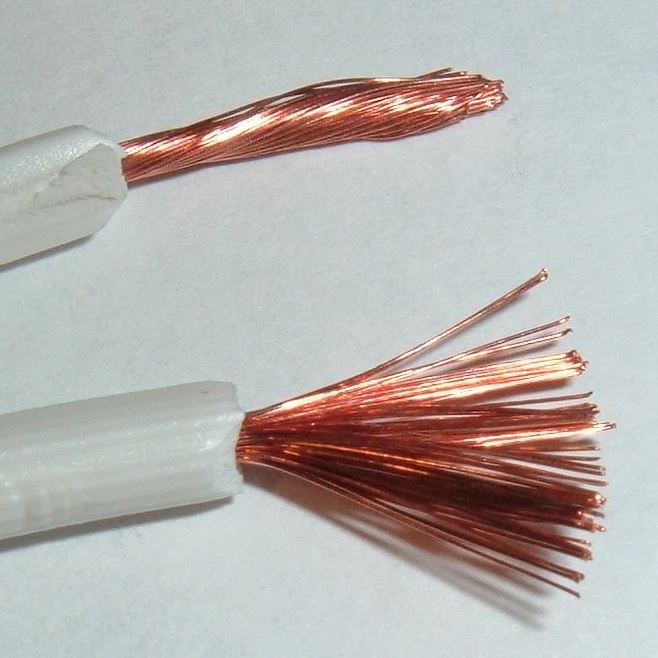
What is solid wire?
In comparison to stranded wire, solid metal core wire, usually referred to as busbars, is a significantly heavier, thicker product. It is ideal for outdoor application where larger currents and more durability are needed. This sturdy, affordable wire can withstand inclement weather and harsh environmental conditions. Various outdoor uses, vehicle controls, and building structures frequently employ it to transport strong currents.
Benefits of Solid Wire
- perfect connection and termination
- high ampacity compared to stranded wire of the same size
- clear sound (reduced noise due to low attenuation) and effective high-frequency transmission
- anti-corrosive and less resistant in indoor and outdoor applications
- ideal for long-distance applications and low voltage drop
- less expensive than stranded wires
The conductor in a solid cable is constructed from a single larger-gauge wire. Solid wire is identified by a single gauge number, such as 24 AWG, to represent the conductor size. The cable’s specification is determined by the gauge of the solid conductor, regardless of whether it has one, two, or four pairs.

Problems with Solid Wire
- Less adaptable
- If utilized in repetitive motion applications, it can harm the cable.
- Skin effects from high-voltage and electricity transmission lines might cause problems.
- Not subject to litigation in electronic, digital, and computer applications
Solid vs. Stranded Wires: The Major Distinctions
Examining the benefits and drawbacks of the two distinctly different types of wire is necessary when comparing stranded and solid wire. The options are reduced through comparison based on how the unique qualities of the wires relate to their anticipated use and the project requirements. You must first decide which weather resistance, elasticity, and resistance to splitting or severing standards apply to your application. then decide which wire best satisfies those requirements.
Among the main distinctions between solid and stranded copper wire are:
Current capacity of stranded versus solid wire
Greater thickness of solid wire results in less surface area for dissipation. In stranded wire, the thinner wires have air gaps and larger surface area due to the individual strands, which results in more dissipation. The solid wire gives a larger current capacity when deciding between solid and stranded wire for electrical applications.
The solid wire will carry more current than the stranded wire if the diameter of both wires is the same. This is due to the air gap that exists between the conductor strands of stranded wire. To achieve the same current capacity, the cross sectional area of a stranded wire would need to be larger than that of solid wire. Because of this, an electrician must choose the right wire size based on the wire gauge and ampacity needed for the intended application.
Another occurrence in AC current with frequency is the skin effect, when current flows on the conductor’s outer surface rather than the entire conductor. For high power transmission stranded wires are used. However, in the case of copper wire (up to 6mm) used for household wiring with a frequency of 50/60 Hz, skin depth may be disregarded.
Routing
Stranded wires are more flexible and bendable than solid wires, making it simpler to route them around obstructions.
Flexibility
The most obvious difference that results from this is flexibility. Stranded cables are far more bendable and flexible, however over time, the flexible strands in terminations may break or come away. Solid conductors will keep their shape over time and properly fit into insulation displacement connectors (IDCs) on jacks, patch panels, and connecting blocks. Solid cables are more stiff and can break if bent too much or too frequently.
Wires with strands are more flexible and can withstand greater flexing and vibration without breaking. In situations where there is a lot of movement or vibration, solid wires might need to be replaced more frequently than stranded wires.
Cost
Solid wire is more cost-effective than stranded wire since its production costs are so much lower. This is most likely due to the ease of production. Solid wire is significantly easier to create because it is single-core in nature. To twist the thinner wires together form stranded wires, more difficult production procedures are needed.
Distance
Solid wires are a preferable option for longer distances since they have less current dissipation. Shorter distances will see good performance from stranded wire.
Performance
Solid cables have superior, stable electrical qualities over a larger range of frequencies and are, in general, better electrical conductors. Since they have less surface area than stranded conductors, they are also thought to be more robust, less likely to be impacted by vibration, and less likely to be subject to corrosion.
Also, solid wire has a higher current capacity than stranded wire. Stranded cables display 20 to 50 percent more attenuation than solid copper conductors, while higher-gauge (thinner) conductors have more insertion loss than lower-gauge (thicker) conductors (20 percent for 24 AWG and 50 percent for 26 AWG). Stranded conductors have higher DC resistance than solid cables because their cross section is not entirely made of copper (there is some air in there as well).
Stranded wires do not always outperform solid wires. According to the application. Better for fixed installations are solid wires. For uses where the wire must bend, stranded wires are preferable.
Are stranded or solid wire better power cables?
A wire and cable type must be chosen based on initial and ongoing costs, indoor/outdoor and specialized applications, load kinds, motion, the appropriate ampacity, and other weather and environmental parameters, among other considerations. As a result, deciding between solid wire and stranded wire depends on a variety of criteria.
Simply put: Solid wire is the option for you if you desire longevity, simplicity, smoothness, and, most importantly, a cost-effective solution depending on your required applications.
Stranded wire is your best option if you need long-term flexibility and specific motion-based applications.
The line current in the conductors will be significant for transmission and distribution lines that need to have a high power capacity, which is why large diameters are required. The conductor’s size will determine how much current flows through it.
The capacity of the line can be significantly increased by pushing the temperature up but, at that higher temperature, the conductors will sag much more. The maximum capacity of the line will be constrained by the sag of the conductors if the structures are not made to withstand larger sag, which is why various core types are employed. For example carbon fiber cores expand less than steel and are lighter, the sag caused by heating of the cables is reduced.
According to NEC code, a house’s internal wiring must be secured to the frame of the building. Solid wire is typically utilized for the permanently placed wiring because it does not need to move and is less expensive. Stranded wire is used to make appliance wires that plug into walls so that they may lay flat and move freely.
Solid copper wire easily breaks, especially when it is slightly dinged. The majority of electrical connections require some wire bending and arrangement to fit in the final position, increasing the risk of a fracture. It can take hours to locate and fix the problem, and you are unaware of it during installation.
Does stranded wire have a higher amp capacity than solid wire?
Not at 50 or 60 Hertz, where the majority of power is transferred. While solid wire is easier to bend into attractive places in a panel and easier to terminate because you won’t have a stray strand not under a terminal, stranded wire is easier to draw through lengthy conduit lines.
Solid wire and stranded wire are not distinguished in ampacity (amperage capacity) tables.
Wires are typically assigned a gauge designation that indicates their comparable diameter for both solid and stranded wires. Therefore, generally speaking, a solid wire with the same 14 Ga classification and a 14 Ga stranded wire will carry the same current safely.
Remember that the stranded wire will have a slightly larger physical diameter because the packing of the strands leaves open spaces, and the overall diameter will be greater due to the open interstitial spacing in order to obtain the same resistivity or copper cross section.
What about data cables? Solid vs. stranded
Due of stranded wire’s attenuation, solid wire is the recommended option for long lengths. The current dissipation of solid wire is lower than that of stranded wire. Patch cables employ stranded wire because of its exceptional flexibility.
Final thoughts on solid vs. stranded wire
While there are obvious distinctions between solid and stranded wire, the decision to use one over the other is frequently based on the installers’ preferences.
Since copper gets harder with age and stranded wiring has less pulling strain, many electricians observe that stranded wire is simpler to draw in and out when replacing wiring after a number of years.
Solid wire is typically utilized when an electrical project calls for wiring sized 10 and smaller since it is easy to pull and because terminating smaller strands can be tricky for some people. This reduces the likelihood of mistakes when the wiring is completed. Stranded wire is preferred for sizes 8 and up.
Unless solid wiring is chosen for the electrical installation, stranded wiring is used more frequently. Stranded wire is more likely to be utilized in complicated projects with lots of bends. When flexibility is required, stranded wire is the material of choice.

